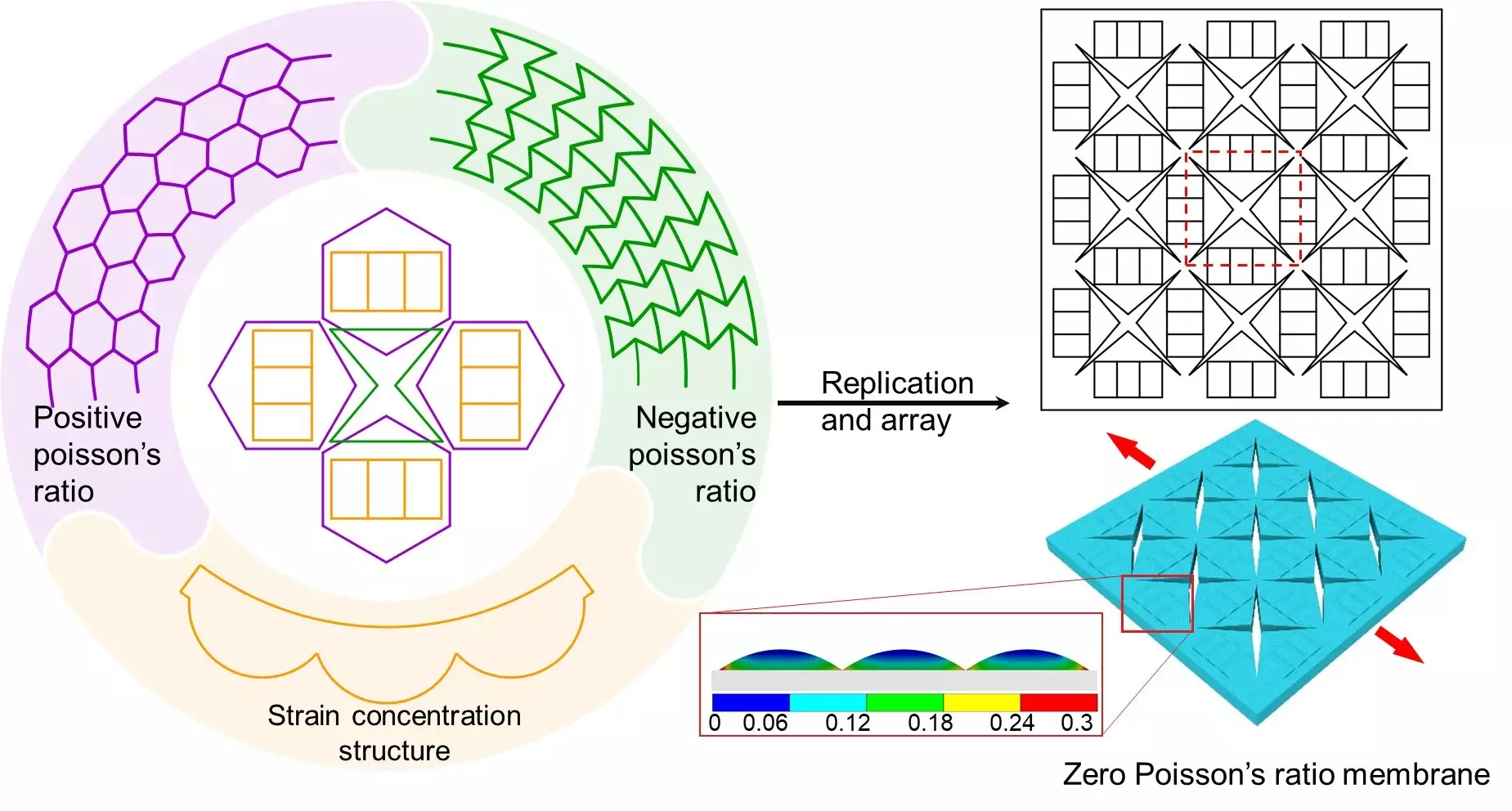Flexible sensors have seen significant advancements in the past ten years, allowing them to possess a wide array of sensing capabilities. However, one of the major challenges that researchers face is measuring complex deformation that arises from forces or strains coming from multiple axes. The lack of independent perception of multi-axial stimuli poses a significant obstacle in accurately measuring this type of deformation.
The main hurdle in achieving independent perception of biaxial stimuli in flexible sensors is the Poisson’s effect of the sensing materials. This effect hinders the ability to accurately measure multi-axial stimuli. Researchers have identified zero Poisson’s ratio (ZPR) materials as a potential solution to the interference issues in perceiving biaxial stimuli. ZPR materials maintain a constant transverse width under longitudinal strain, making them ideal for addressing the challenges faced in flexible sensors.
Research Led by Prof. Hao Wu
Prof. Hao Wu, from the Flexible Electronics Research Center at Huazhong University of Science and Technology, spearheaded a study on preparing zero Poisson’s ratio elastomer membranes. Wu and his student, Dr. Xin Huang, explored combining traditional positive Poisson’s ratio (PPR) structures with negative Poisson’s ratio (NPR) structures to achieve a zero Poisson’s ratio structure. They discovered that the Poisson’s ratio of the hybrid structure was a combination of the individual structures’ Poisson’s ratios. By adjusting the feature size and width of the hybrid structure, the researchers were able to manipulate the Poisson’s ratio between positive and negative values.
Impact of Hybrid Structure on Poisson’s Ratio
Through finite element analysis, the researchers determined the optimal parameters needed to obtain zero Poisson’s ratio membranes. The PDMS membrane with a hybrid structure exhibited a significantly lower Poisson’s ratio of 0.07 compared to the PDMS membrane without the hybrid structure, which had a Poisson’s ratio of 0.43. This highlights the effectiveness of the hybrid structure in reducing the Poisson’s ratio, making it an essential component in flexible sensors.
The ZPR flexible sensors developed by Prof. Wu and his team have the capability to accurately detect uniaxial stimuli and independently perceive biaxial stimuli. These sensors are crucial in cases of robotic manipulation and locomotion with complex deformation. They can accurately measure contact forces between rigid manipulators and grasped objects, regardless of the objects’ deformation. Additionally, ZPR flexible sensors can detect the normal bending of fingers and unexpected collisions with obstacles when attached to manipulators’ fingers. They also play a vital role in determining the locomotion distance and direction of biaxial soft robots.
The exotic sensing capabilities of ZPR sensors hold great potential for applications in various fields such as healthcare, human-machine interfaces, and robotic tactile sensing. Prof. Wu emphasizes the importance of these sensors in advancing technology and opening up new possibilities for innovation in the future.
The development of zero Poisson’s ratio materials in flexible sensors presents both challenges and opportunities for researchers. By overcoming obstacles related to material properties and structural design, the potential applications of ZPR flexible sensors are vast and hold promise for future technological advancements.



Leave a Reply